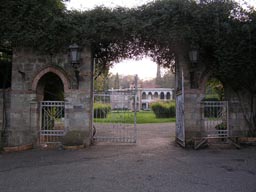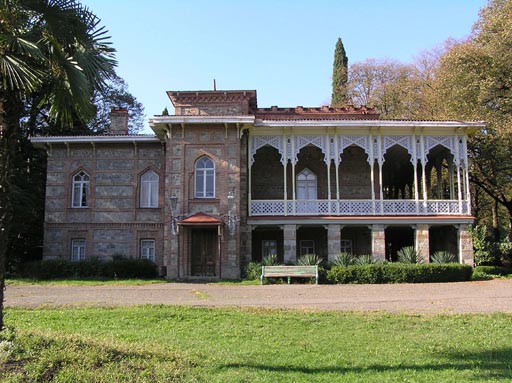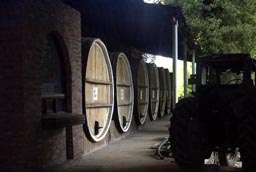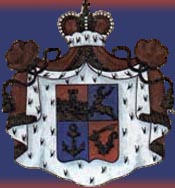
Tsinandali Today
Introduction
Tsinandali, the historical home of Alexandre Chavchavadze and his family, is one of Georgia’s most important cultural sites. As a museum and cultural center, it can offer an extraordinary experience for the general public, tourists, educators, students, and researchers. No better place exists to tell the story of the powerful family that left a lasting mark on Georgia’s history, to expose visitors to traditional as well as contemporary Georgian arts and values, and to inspire both Georgians and international visitors to consider the possibilities for the future of their nations and world.
As part of the effort to preserve Georgia’s cultural heritage and ensure that Tsinandali effectively tells its story to future generations, the Silk Road Group will renovate the property, introducing modern amenities while preserving its most important historical features. The renovation is taking into account all relevant factors, including:
- Physical elements such as the landscape, environment, climate, and architectural and structural characteristics (including the use of indigenous materials and application of local craftsmanship);
- Functional considerations—such as the use of facilities for special events, dining, and entertainment—that go beyond Tsinandali’s main role as a museum and cultural center;
- The needs of all interested constituencies—local, national, and international;
- International standards for historical conservation, preservation and restoration;
- Financial, market, and resource considerations.
A vision for the effective renovation of four main components of the Tsinandali complex follows:
- A new visitor center;
- The main house and museum;
- The park; and
- The winery.
The Visitor Center
Near Tsinandali’s imposing entrance gate, a tasteful steel-and-glass visitor center will be constructed. Because this center will be the visitors’ first contact with Tsinandali, it will be designed to draw attention to the landscape, and will incorporate architectural elements that reflect the spirit of Alexandre Chavchavadze.
The visitor center will be staffed by professionals who will provide visitors with physical and conceptual orientation to the complex, as well as historical information on the significance of Tsinandali. At an information desk, staff will
- Answer questions;
- Provide information on other cultural resources in the area;
- Distribute maps, brochures, and schedules of events; and
- Arrange guided tours of the complex (or selected facilities of interest).
At an admissions desk situated near the center of the room, staff will
- Collect admissions fees;
- Administer membership programs; and
- Book special events.
After purchasing tickets, visitors will be invited to watch a short (10-20 minute) orientation film that will present the story of the Chavchavadze family. The film, to be produced in Georgia, will use engaging images and narrative to provide visitors with the background that will enable them to understand the lasting significance of the Chavchavadze family and the history that transpired in and around Tsinandali. The film will strive for both scrupulous historical accuracy and narrative simplicity, emphasizing a small number of important points concerning the family and the site.
The visitor center will provide several additional services for visitors, including basic banking and currency exchange facilities; storage lockers for personal property; a shop; a café; workrooms for researchers; and an information/resource room. The visitor center will also house maintenance, housekeeping, and security services for the complex, as well as provide storage space. The visitor center will convey to visitors the message that Tsinandali is more than a museum—it is a living cultural and education center.
 The Front Gate
The Front Gate
The House Museum
The Tsinandali House Museum has unusual evocative power. Roaming its rooms and halls takes visitors back in time and raises tantalizing questions about its former inhabitants and their world: Who lived here? sWhat was the basis of their
prosperity? What role did literature, art, and music play in their lives? What was their significance in Georgia’s social, cultural, political, economic, and military history? What important events occurred here?
Exterior. The rectangular house is situated in the midst of a serene botanical garden. The exterior façade features unusually fine stonework; a veranda that incorporates ornamental woodwork wraps around two sides of the house. Despite the prominence and wealth of its former inhabitants, the trappings of power and elitism are remarkable absent. External renovation will include
- Roof replacement;
- Window replacement; and
- Cleaning and repainting of exterior walls.
Entrance (Area 1). The main entrance and stairway will be restored as closely as possible to their original state, based on available historical information and photographs.
Rooms 2 and 3. Rooms 2 and 3, located on the south side of the museum, will be recreated as period dining and sitting rooms, based upon available photographs, newspaper clippings, diaries, and lists of furniture. The remaining original items of furniture will be augmented with complementary borrowed or purchased pieces. Floors, wall finishes, and ceiling moldings will be restored to their former condition, to the extent possible. Electrical wiring, lighting, heating, air conditioning, and humidification systems will be hidden in walls, floors, or ceilings. (Controlling temperature, light, humidity, and atmospheric pollutants is crucial to the long-term maintenance of the house.) The period rooms will convey a sense of the prosperous but modest world inhabited by the Chavchavadze family, and will foster visitors’ identification with the house’s former inhabitants. To facilitate intellectual access, text, labels, audio-visual enhancements, and computer interactives can be considered, to the extent that they do not interfere with the historical atmosphere that these rooms strive to evoke.
Rooms 5, 6, and 7. These three rooms on the north side will be converted into temporary exhibition galleries that will highlight the legacy of the Chavchavadze family. In contrast to the permanent period rooms, the exhibitions in rooms 5, 6, and 7 will change every 2-4 years. Temporary exhibitions might focus on a single family member (such as Alexandre Chavchavadze’s daughter Ekaterine, who became the Queen of Samegrelo), a historical event (for example, Shamil’s kidnapping of David Chavchavadze’s wife, children, and employees), or a wider theme. These exhibitions will incorporate video, artifacts, photographs, historical narrative text, and perhaps presentations by actors, as appropriate. They will strive to both inform and entertain visitors.
Other rooms. The remaining small rooms will be converted to display spaces that focus on the Chavchavadze family’s accomplishments, including their relevance to Georgia today. The small and divided character of these spaces will present some challenges in presentation; methods of presentation and interpretation are yet to be determined.
Ground floor. The ground floor will be used for storage of artifacts, photographs, and documents. A mechanical room, audio-visual room, and custodial room also will be located on the ground floor. Rounding out the ground floor spaces will be a guides’ room and a small gift shop (with a work room to store, sort, and price products, as well as a manager’s office).
Annex. The house annex, constructed during Soviet times, is poorly designed and built, and detracts aesthetically from the main house and its surroundings. It will therefore be demolished. A tastefully designed café (with restrooms and a small adjacent kitchen) that will serve light fare consisting of beverages, sandwiches, and pastries will be built on the property, although its location has not been decided. When the weather permits, tables and chairs will be set up in the surrounding garden.
The Museum
The Winery
Tsinandali’s immense winery will become a multipurpose cultural and social center—a gathering place for artists, researchers, gourmets and wine connoisseurs, international tourists, and others. The great wine-making tradition of eastern Georgia will be a theme in many of the features envisioned in this space. Among the ideas for this conversion are the following:
- An elegant wine tasting bar where connoisseurs and novices alike will have opportunities to sample wines from the region and beyond;
- A luxurious wine and cigar club for afionadoes of this traditional mix of flavors;
- Fully restored wine vaults, restocked with wines produced in the region from the present day back to the 19th century;
- Temporary exhibits that illuminate the history of wine, the craft of winemaking, appropriate combinations of food and wine, and similar topics, complemented by lectures and seminars;
- A permanent exhibit on the architecture and renovation of the winery itself, much of which is hollowed out of the earth;
- A gourmet restaurant, featuring regional and international cuisine, that will offer a dining experience to rival first-tier restaurants throughout the world;
- On-premise studios with adjacent exhibits that will allow Georgian artists to showcase and sell their works of jewelry, painting, sculpture, woodworking, fabric arts, glassworks, and other arts;
- An evening entertainment venue, with a stage for live performances, to draw in after-hours visitors;
- A wine shop with a full selection of wines and related products such as glassware, books, and accessories;
- A modest-sized wine production facility that will use grapes grown in Tsinandali’s own vineyard and will offer tours and demonstrations focused on modern winemaking.

Wine Barrels at Tsinandali
In addition, parts of the winery’s entry hall will be renovated and made available for private events including weddings, receptions, and anniversaries; the colossal size of this space allows it to accommodate a wide range of private rental uses.
The winery will also accommodate meeting rooms, administrative and public relations offices, and educational spaces, as well as the requisite mechanical rooms, storage and custodial spaces, media control room, seating areas, and restrooms, which will be unobtrusively scattered through out the building.
[ TOP ]
